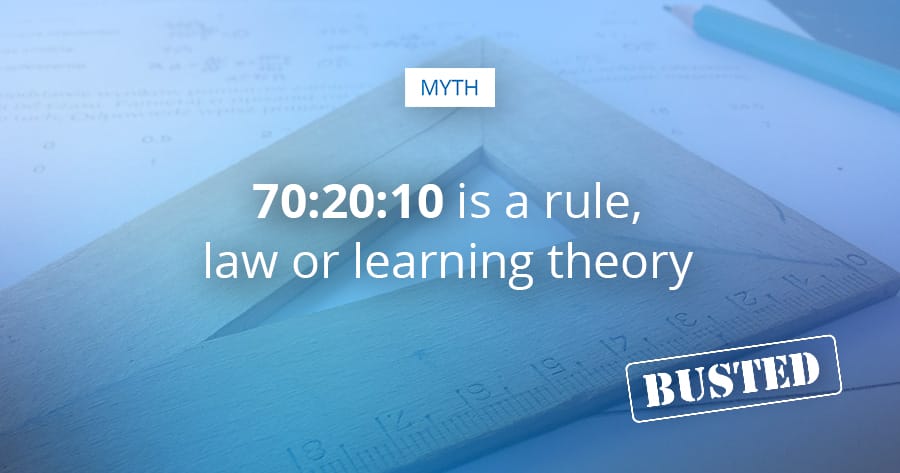
Is 70:20:10 a ‘rule’ or a ‘law?’ See what industry experts say about this commonly held myth
As we continue to explore the myths and realities around the 70:20:10 learning model, and how its core principles can be applied to a learning management system (LMS), it’s important to understand that the framework is not fixed on the “70:20:10” ratio from which the name is derived.
Read more: Is the 70/20/10 model still relevant in today’s learning organizations?
70:20:10 isn’t a strict rule or theory for how much of a certain learning modality should be delivered and when, but it’s simply a framework to help extend the focus on collaborative learning beyond the classroom, workshop and elearning approach.
A good blended learning plan, paired with the right LMS, provides a means for uncovering that hidden knowledge in your organization that, without a way for employees to access it, may never see the light of day.
How can 70:20:10 help you build a culture of collaborative learning?
When applied well, 70:20:10 improves quality and results in terms of learning and performance.
According to a recently published report by Towards Maturity and Charles Jennings, Top Deck organizations that have adopted the 70:20:10 learning model are twice as likely to report that they have:
- Improved learning culture
- Business responsiveness
- Productivity and engagement
- Individual processes
- Learning efficiency
Those that achieve a balance across the three activity areas consistently report better outcomes. Download the report to read more about Learning in the Workflow, Social Learning and Formal Learning.
